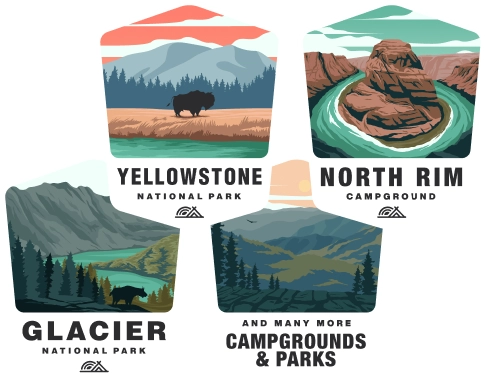Camping at Bears Ears National Monument
Location and Overview
Bears Ears National Monument is located in the southeastern region of Utah, United States. Established in 2016 by President Obama and later modified by President Trump, the monument covers a significant expanse of land rich in natural beauty and cultural heritage. Bears Ears is known for its distinctive twin buttes that resemble bear ears, which gave the region its name, and is considered sacred by many Native American tribes.
Camping Regulations
Permit Requirements: As of my knowledge cutoff date, Bears Ears National Monument does not require permits for individual, non-commercial camping. However, this could change, and it's recommended to check with the Bureau of Land Management (BLM) or the U.S. Forest Service for the latest information before your trip.
Camping Areas: There are no developed campgrounds within the monument. Most camping is dispersed, meaning campers must be self-sufficient and follow Leave No Trace principles to minimize their impact on the environment.
Length of Stay: Typically, dispersed camping allows for a stay of up to 14 days within any 30-day period. After 14 days, campers must relocate at least 25 miles from the original campsite.
Campfires: Campfires may be allowed, but restrictions often change due to weather conditions and the risk of wildfires. Check the current regulations prior to arrival, and if allowed, use established fire rings and make sure fires are completely extinguished before leaving.
Bear Awareness and Safety
While encountering a bear in Bears Ears National Monument is not overly common, it's crucial to be prepared and know how to store food and act in the presence of a bear.
-
Food Storage:
- Use bear-proof containers or hang your food between trees at least 10 feet above the ground and 4 feet from each tree trunk.
- Keep food well away from sleeping areas.
- Never leave food or scented items (like toothpaste or deodorant) unattended.
-
Behavior in Bear Country:
- Make noise while hiking to alert bears to your presence.
- Travel in groups when possible.
- Avoid dawn and dusk hikes when bears are most active.
-
Bear Encounters:
- If you see a bear, remain calm and do not approach it.
- Back away slowly and speak calmly to let the bear know you are not a threat.
- If the bear follows you, stand your ground, wave your arms, and speak more loudly.
- Never run from a bear, as this may trigger a predatory response.
Cultural Respect and Preservation
Bears Ears is home to thousands of archaeological sites, including cliff dwellings, petroglyphs, and sacred Native American cultural sites. It's imperative to respect these areas.
- Do Not Disturb Artifacts:
- Look at rock art, dwellings, and artifacts, but do not touch, deface, or remove them.
- Stay on Established Trails:
- Walking off-trails can damage fragile ecosystems and cultural sites.
- Respect Current Indigenous Practices:
- Understand that many areas within the monument are still used by Native American tribes for traditional and spiritual practices.
Environmental Consideration
-
Leave No Trace:
- Take all trash with you, including biodegradable items.
- Use established campsites to reduce your impact.
- Avoid creating new trails or shortcuts.
-
Water Sources:
- Protect water sources by camping at least 200 feet away.
- Use biodegradable soap and do not wash directly in streams or lakes.
Planning and Preparation
Before heading to Bears Ears National Monument, thoroughly prepare for your trip:
-
Check the Weather:
- Weather can be unpredictable, with hot summers, cold winters, and occasional flash floods. Be prepared for a range of conditions.
-
Maps and Guidance:
- Acquire detailed maps of the area and plan your route carefully.
- A GPS device or a compass can be invaluable in remote areas.
-
Emergency Preparedness:
- Carry a first aid kit, plenty of water, and emergency supplies.
- Inform someone about your travel plans and expected return time.
Remember to check for the latest updates from the BLM or the U.S. Forest Service regarding Bears Ears National Monument before you embark on your camping adventure, as regulations and conditions may have changed since this information was last updated.

